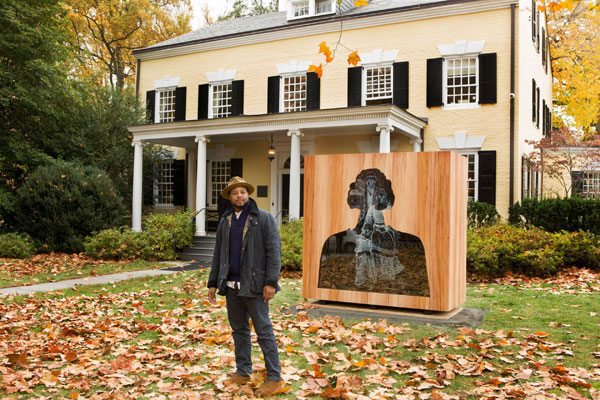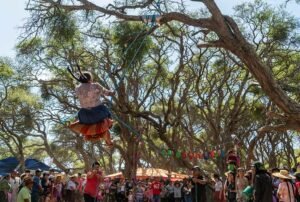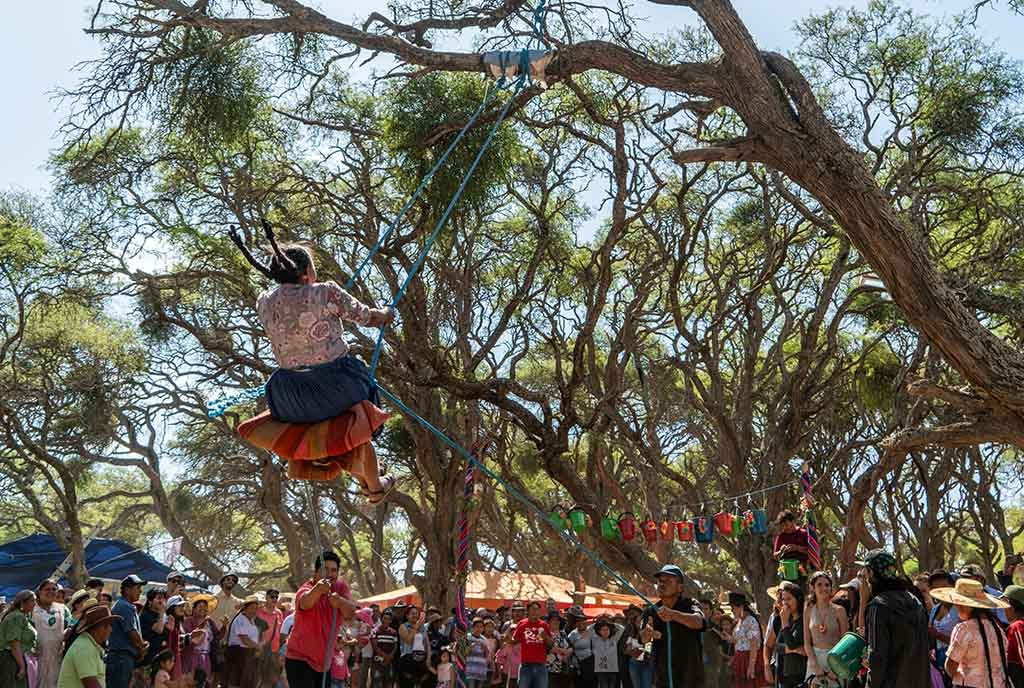
November 14, 2017; Artsy
In the US, we seem to be having a national conversation on race. Not the planned, designed kind that some (perhaps unreasonably) envisioned, but a show-stopping, pathological-family type of conversation full of surprises, good and bad. Two strands of the conversation—the slaveholding history of colleges and universities and what to do with Confederate monuments—overlap in a recent CityLab story on Titus Kaphar’s public sculpture of Samuel Finley, Princeton University’s fifth president, called Impressions of Liberty.
Kaphar’s monuments reverse the reversals of power to show that leaders in the country’s fight for liberation also owned slaves.
Antwaun Sargent writes, “Princeton is one of few universities…to enlist a contemporary artist to create a monument that challenges the myths we tell about the founding of America. It also had a very close relationship to slavery.”
Kaphar describes the two-ton sculpture of Finley, an inverted bust carved into a block of sycamore wood and coated in graphite, as “a monument to the memory of the enslaved.” Etched into a layer of glass that has been placed over the dark recess created by Finley’s inverted head is a family of three finely dressed black figures.
Sign up for our free newsletters
Subscribe to NPQ's newsletters to have our top stories delivered directly to your inbox.
By signing up, you agree to our privacy policy and terms of use, and to receive messages from NPQ and our partners.
Martha A. Sandweiss, a professor at Princeton, says, “Princeton University, founded in 1746, exemplifies the central paradox at the heart of American history. From the very start, liberty and slavery were intertwined.”
The sculpture is part of “The Princeton and Slavery Project,” started by history professor Martha A. Sandweiss. For the past four years, she and a team of historians, archivists, and students have gone through the university’s records to explore its relationships to slavery.
According to Sandweiss and her colleagues’ research, “In the decades between the American Revolution and the American Civil War, the number of students attending Princeton from the South peaked at 66 percent.” The number of Southern students at Harvard and Yale were much lower. The student body at Princeton helped shape a culture that supported slavery. This had a direct impact on the black community near the school, which was subject to racial acts of terror by Princeton students. The Southern population at Princeton only began to drop in 1861 when its Southern students went home to fight in the Civil War. Further, the school’s first nine presidents owned slaves. Professors also owned slaves. The last “instance of slavery” was in 1840.
The sculpture sits in front of Maclean House, which used to house Princeton presidents and their slaves. The trees in front of the house are called “Liberty Trees,” in celebration of the repeal of the Stamp Act of 1765, the British tax against which the American colonies fought. A year later, six of the slaves owned by university presidents were sold under those trees. Kaphar notes that the trees are literally diseased. Sargent concludes, “Like his sculpture, the steel coils rooted inside the sycamore trees scaffold a tragic impression of liberty.”
Kaphar sees this sculpture, which is part of a larger exhibit at the school by the artist, as an entry into the national race and Confederate monuments conversations. He says, “My proposal, the new line of thinking I am trying to insert into the narrative and dialogue, is that rather than just taking these things down, we can engage contemporary artists to make work that actually pushes back against these public monuments.”—Cyndi Suarez













